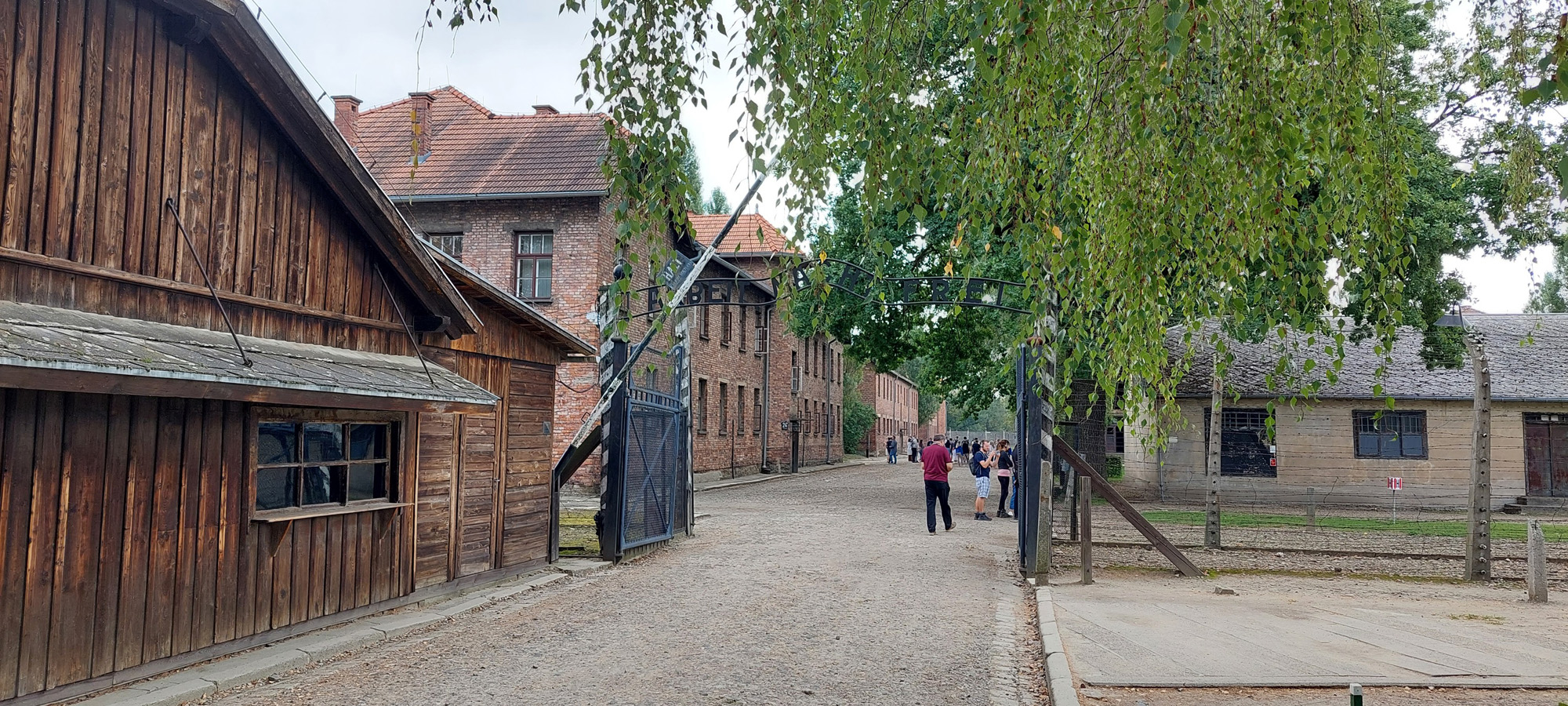 |
Jan & Jan-Jan's Rejseklubben is an exclusive club, with only 2 members, and we do NOT accept new members. |
 |

A former World War I camp for transient workers and later a Polish army barracks, Auschwitz I was the main camp (Stammlager) and administrative headquarters of the camp complex. Fifty km southwest of Kraków, the site was first suggested in February 1940 as a quarantine camp for Polish prisoners by Arpad Wigand, the inspector of the Sicherheitspolizei (security police) and deputy of Erich von dem Bach-Zelewski, the Higher SS and Police Leader for Silesia. Richard Glücks, head of the Concentration Camps Inspectorate, sent Walter Eisfeld, former commandant of the Sachsenhausen concentration camp in Oranienburg, Germany, to inspect it. Around 1,000 m long and 400 m wide, Auschwitz consisted at the time of 22 brick buildings, eight of them two-story. A second story was added to the others in 1943 and eight new blocks were built. Reichsführer-SS Heinrich Himmler, head of the SS, approved the site in April 1940 on the recommendation of SS-Obersturmbannführer Rudolf Höss of the camps inspectorate. Höss oversaw the development of the camp and served as its first commandant. The first 30 prisoners arrived on 20 May 1940 from the Sachsenhausen camp. German "career criminals" (Berufsverbrecher), the men were known as "greens" (Grünen) after the green triangles on their prison clothing. Brought to the camp as functionaries, this group did much to establish the sadism of early camp life, which was directed particularly at Polish inmates, until the political prisoners took over their roles. Bruno Brodniewicz, the first prisoner (who was given serial number 1), became Lagerälteste (camp elder). The others were given positions such as kapo and block supervisor. |
 |
Copyright © All Rights Reserved |
 |